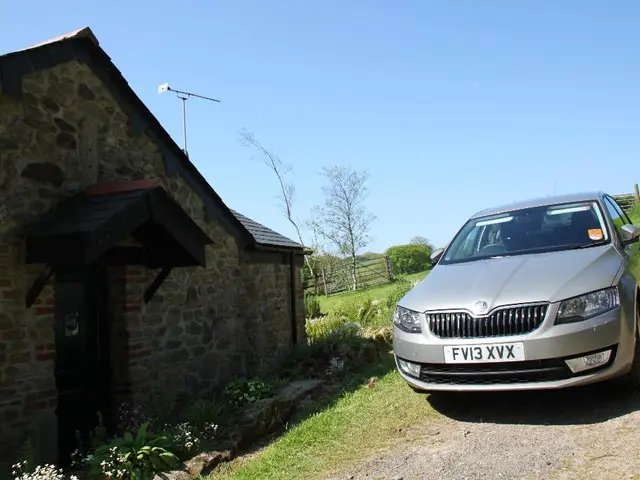Eco-friendly building using wood materials
Sustainable Timber Construction in Focus
Embracing wood as a primary building material in the construction sector could expedite the reduction of resource consumption and energy emissions. Advancements in technology ensure that sustainability standards are maintained in timber construction. Munich serves as a testament to this, with several eco-friendly timber constructions.
To foster successful timber construction projects, it's essential that all involved parties forge relationships and collaborate closely. This upcoming event offers the perfect platform to do so.
Attendees can expect an engaging discussion on crucial circumstances that contribute to an environmentally friendly and socially beneficial outcome. Registration is necessary due to limited space.
- Register here
—
Practiced in countless projects worldwide, sustainable timber construction holds several key principles:
- Responsible Forest Management
- Utilizing wood from forests that are certified by organizations such as FSC (Forest Stewardship Council) or PEFC (Programme for the Endorsement of Forest Certification), helps safeguard forests from deforestation and damage to ecosystems.
- Reducing Carbon Footprint
- Timber's carbon-absorbing properties during growth contribute to a reduced project carbon footprint. The lower embodied carbon of timber compared to materials like steel or concrete further contributes to a smaller environmental impact.
- Reusability and Maintenance
- Being a renewable resource, timber can be replanted after harvesting. Additionally, durability can be ensured with proper maintenance, though protection against moisture and fire is necessary.
- Innovative Design and Construction Techniques
- Adopting prefabrication methods and incorporating design details that enhance moisture and fire resistance can minimize waste and streamline construction timelines.
- Adhering to Circular Economy Principles
- Buildings should be designed with a focus on disassembly and reusability to facilitate material recycling, in line with circular economy concepts.
—
Prioritizing a collaborative approach, implementing frameworks, promoting education, and advocating for regulatory support set the foundation for successful sustainable timber construction projects:
- Cross-disciplinary Collaboration
- Encourage collaboration between architects, engineers, ecologists, and policymakers to ensure sustainable and adaptable projects.
- Frameworks for Sustainable Practices
- Adopt guidelines for responsible timber construction, such as the Principles for Responsible Timber Construction.
- Spreading Awareness
- Showcase successful sustainable timber construction projects to inspire widespread adoption of best practices.
- Policy Advocacy
- Advocate for building codes and policies that support sustainable timber construction, such as regulations enabling taller mass timber structures.
- To align with the goals of sustainable living, explore home-and-garden projects that incorporate sustainable timber construction, supporting responsible forest management and reducing the carbon footprint.
- By adopting interdisciplinary collaboration strategies, staying informed about sustainable timber construction frameworks, and advocating for innovative design and home-lifestyle policies, it's possible to build a more sustainable future, one home-and-garden project at a time.







